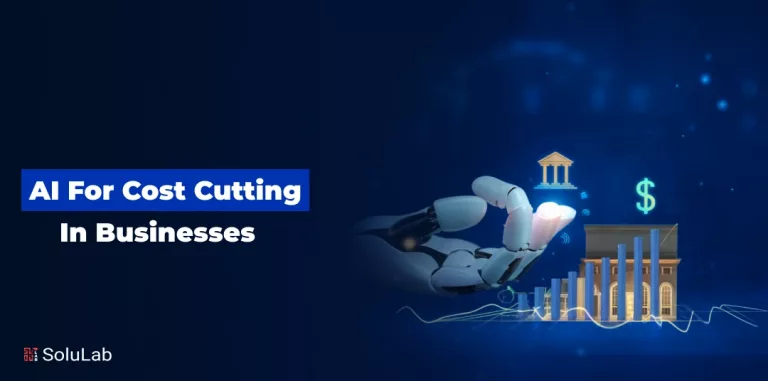
IoT connects billions of smart devices, collecting real-time data from everything—homes, vehicles, factories, and cities. Blockchain, on the other hand, ensures that this data is secure, tamper-proof, and transparent.
Now, when these two come together, the result is revolutionary. From supply chain automation to smart cities and healthcare monitoring, Blockchain adds trust and security to IoT’s speed and connectivity. This blog explores real-world Blockchain IoT applications, how they work, and why this tech duo is shaping the future.
Whether you’re a tech enthusiast or a curious reader, this guide will break down the magic behind the buzz. Let’s dive into the world where IoT meets Blockchain.
What is IoT with Blockchain?
IoT with Blockchain refers to the integration of Internet of Things (IoT) devices, like sensors, smart appliances, or connected vehicles, with blockchain technology to make data exchange more secure, transparent, and tamper-proof.
Some Interesting Market Stats
The global Blockchain IoT market was valued at approximately USD 761 million in 2024. It is projected to experience exponential growth, reaching around USD 74.77 billion by 2034, with a compound annual growth rate (CAGR) of 58.21%.
- Blockchain ensures secure communication between devices.
- It prevents tampering with IoT data (great for supply chains, healthcare, etc.).
- It helps in automated decision-making using smart contracts (e.g., turning off a machine when it overheats).
Advantages of IoT in Blockchain
Some of these benefits that prove that blockchain and IoT can work very well together are as follows:
1. Secure Software Updates
By guaranteeing tamper-proof software upgrades, blockchain technology improves the security of Internet of Things devices. By creating distinct, unchangeable virtual signatures for updating software files, cryptographic hash functions are essential to complete this procedure.
2. Automated Payments and Micropayments
Micropayments and smooth automated payments are made possible by the combination of blockchain technology and the Internet of Things. Devices within IoT systems can carry out transactions on their own without requiring human assistance by carefully utilizing smart contracts.
3. Rapid Transactions With Smart Contracts
Smart contracts are used by blockchain-powered IoT systems to expedite transaction procedures. The time needed for a typical transaction processing is greatly decreased by these self-executing contracts, which enforce certain terms automatically if the predetermined circumstances are met.
4. Reduced Costs
Blockchain enables interactions between people and trustless systems, eliminating the need for middlemen in IoT networks. Decentralization lowers operational and maintenance expenses by reducing reliance on central authorities like cloud service providers. Additionally, companies can reduce costs that are associated with external services by implementing more effective data-sharing and transaction models.
The Intersection of IoT and Blockchain
IoT and blockchain technologies work together to improve data automation, security, and transparency, which changes industries. Blockchain guarantees the validity, accountability, and reliability of this data, and IoT makes it easier to acquire, process, and analyze data in real-time across linked devices. These technologies work together to facilitate effective data sharing among consumers and suppliers in an ecosystem.
The objectives of Industry 4.0, including digital transformation and intelligent industry breakthroughs, are supported by this synergy. IoT sensors, for example, track production schedules and distribute this data to customers, suppliers, and delivery partners, ensuring well-informed choices. Similarly, to improve safety standards, pharmaceutical businesses employ blockchain to confirm raw material integrity and IoT to streamline compliance inspections.
What Are The Different IoT Blockchain Use Cases?
People are becoming tech-savvy day by day and that day is not far when everyone will own an IoT device.
1. Smart cities and smart homes
Many smart IoT gadgets can automate the homes we live in nowadays. TVs, refrigerators, sensors, and surveillance cameras are examples. However, only authorized users can remotely control all smart home IoT devices.
Well, how does the network transfer information? A central server or gateway receives device and sensor data. A smartphone or computer can control this gateway. However, information security is the main issue. This data is also susceptible to attacks. Thus, blockchain technology is IoT’s best buddy. Let’s discuss how blockchain can help IoT devices.
- Improved security
By recording communication and control information as transactions in the distributed ledger, one can improve the security of smart home systems.
- Privacy and confidentiality
Blockchain can help in improving privacy through symmetric cryptography with algorithms like AES. Also, it can improve the integrity of the transaction by hashing functions. Besides, time-stamping and proper encapsulation will ensure robust security, too.
- Verification
Blockchain’s distributed storage makes data deletion and corruption harder. Any inquiry can validate such facts and check for tampering. You can also reject unlawful transactions. For instance, Waltonchain promotes a Smart City Revolution. This project will be among the top 10 by 2020. Hardware (microchips) and software (blockchain) are involved. It provides many smart city electricity options. Additionally, blockchain aids supply chain management.
2. Supply Chain Management And Smart Contracts
Manufacturers must negotiate contracts with merchants to deliver goods and services. After contracts are signed, shipping begins. However, the shipping process is complicated and involves the local shipping agency, ports, customs officers, carriers, customs services, delivery agents, and clients.
Each point has a succession of messages and acknowledgements. From producers to customers, recognizing the shipment. Current trading policies also inform suppliers of payment procedures. Blockchain technologies and smart contracts can aid event chaining.
3. Public Health Care
IoT has immense potential to improve the healthcare that we receive today. From health records to clinical trials, it has changed and improved everything. These improvements are helping in saving time and removing the need for doctors. But that is only one side of the whole scenario because blockchain is going to be a game changer for IoT.
- Counterfeits Drug
Blockchain and IoT can help stop counterfeit pharmaceuticals worldwide. For each legitimate medicine in a blockchain ledger, location can be physically stamped with an identity. A party can query the blockchain to verify drug validity. Manufacturing details are readily available. Thus, any falsified medications may be found and eliminated.
- Electronic medical records
Blockchain will enable health recordkeeping. Doctors can use them anytime, anywhere. Additionally, IoT devices will offer easy real-time health monitoring. Medical records can be recorded by such devices. Doctors will have access to massive patient health data. Smart gadgets can record patients overexercising in their medical data. Additionally, such devices can beep to notify them.
- Smartwatches and other devices
IoT devices can monitor jogging heart rates, which can benefit heart patients. Doctors can track their heart health and blood pressure with a smart gadget. Mediledger is a common healthcare blockchain IoT use case. The pharma supply chain network is open and decentralized, improving patient safety, drug supply security, and track-and-trace compliance.
4. Public safety
Public safety can be threatened by natural or man-made calamities like building collapses and terrorist attacks. They can kill or severely injure. They cause social disruptions and property destruction.
The government usually handles critical crises with fire, police, and health services. To record communications, they use networks. Accident victims might use these recordings to prove their damages.
By raising awareness, the media protects the public from misconduct. This is where blockchain can help record digital communications. They can also store communication details in the distributed ledger. This verifies all communication records.
Additional tools like the Bitcoin wallet can query records. Their communications access will be authentic and documented. So, journalists, plaintiffs, and defendants can always get confirmed facts.
Read Also: Blockchain for Smart Cities
Impact of Artificial Intelligence on Future Trends
In the future, developments in AI will improve the IoT and Blockchain integration even more. Blockchains allow for the uploading of AI models and algorithms, guaranteeing accountability and traceability. This collaboration will spur creativity in some sectors. For example, by confirming the validity of every batch, blockchain can assist the pharmaceutical business in detecting counterfeit medications, enhancing patient trust and security. AI can also forecast market demands, optimize supply chain operations, and guarantee regulatory compliance, all of which increase the process’s dependability and efficiency.
The Final Word
While IoT enables real-time data collection and automation, blockchain ensures that data remains secure, transparent, and tamper-proof. From smart cities and supply chains to healthcare and energy grids, blockchain IoT applications are solving critical challenges like data breaches, inefficiencies, and lack of trust.
However, challenges like scalability and interoperability still need to be addressed for mass adoption. Still, the potential is enormous. As both technologies grow, we can expect a wave of smart, decentralized, and secure systems to become the new normal.
SoluLab helped IoT-powered water management system for True Water, enabling real-time monitoring of TDS, flow, and pressure via Wi-Fi-enabled sensors. Integrated with Arduino and ESP8266, the system delivers accurate data, predictive maintenance, and visual dashboards—enhancing water quality, transparency, and usage tracking for residential and commercial customers.
SoluLab, an IOT development company, can help you provide end-to-end IoT product solutions and solve all the queries about the same. Contact us today to discuss further.
FAQs
1. How does blockchain improve IoT security?
Blockchain prevents data manipulation and unauthorized access by creating immutable records and eliminating the need for centralized control.
2. Can blockchain help reduce IoT costs?
Yes, by automating processes through smart contracts and reducing reliance on intermediaries, blockchain can lower operational costs.
3. What are some real-world examples of blockchain IoT applications?
Examples include smart energy grids, supply chain tracking, smart homes, predictive maintenance in manufacturing, and autonomous vehicle coordination.
4. How do smart contracts work in IoT systems?
Smart contracts automatically trigger actions based on real-time data from IoT devices—like turning off machines or initiating payments.
5. What industries benefit most from Blockchain IoT integration?
Industries like logistics, healthcare, agriculture, automotive, and energy are seeing significant benefits from this integration.




